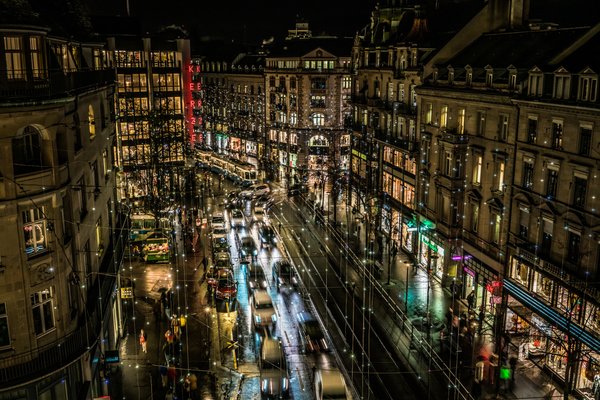
Shopping on Bahnhofstrasse
This shopping street in central Zurich runs from the main train station to Lake Zurich, with luxury boutiques, Swiss banks, and Europe's largest church clock face.
Zurich's Grossmünster is a historic church with twin towers offering city and Alps views, with plain decor and art.
Grossmünster, an iconic twin-towered church, stands as a symbol of Reformed Zurich. Its towers offer a panoramic view of the city and the Alps, making it a must-visit for both history enthusiasts and lovers of scenic landscapes. Legend has it that Charlemagne discovered the graves of the city's patron saints here, which led to the church's founding.
Established around the 12th century, Grossmünster has witnessed Zurich's transformation over time. The Romanesque-style architecture invites visitors to appreciate its structured design, which contrasts with the more decorated styles of other European cathedrals. Its interior houses simple decor that reflects the church's role in the Protestant Reformation, led by Huldrych Zwingli in the 16th century.
A climb up the 187 steps of the Karlsturm, one of the church's two towers, rewards visitors with a striking view. At a height of 62 meters (approximately 203 feet), you can look over the rooftops to the Limmat River, Lake Zurich, and on a clear day, the snow-peaked Alps.
Grossmünster also features significant works of art. The bronze doors, sculpted by Otto Münch in 1935, and the colorful stained glass windows designed by Swiss artist Augusto Giacometti in 1932, contribute to the church's artistic appeal. Additionally, the crypt houses an impressive statue of Charlemagne, honoring his legendary connection to the site.
Visitors should respect the church's atmosphere of reflection and its role as a place of worship. Photography inside may be limited, so it's advisable to check guidelines beforehand. Those interested in choral music can attend services and concerts to hear the church's exceptional acoustics.
Grossmünster is not only a historical site but also a viewpoint for experiencing Zurich's architectural beauty and natural environment. It’s a cultural anchor that provides insight into Switzerland’s religious and artistic history. Open daily, the best time to visit is early morning or late afternoon to avoid crowds. Accessibility might be difficult for those with mobility issues due to the stairs.
Tell us about it! Is it place worth visiting, are you coming back?